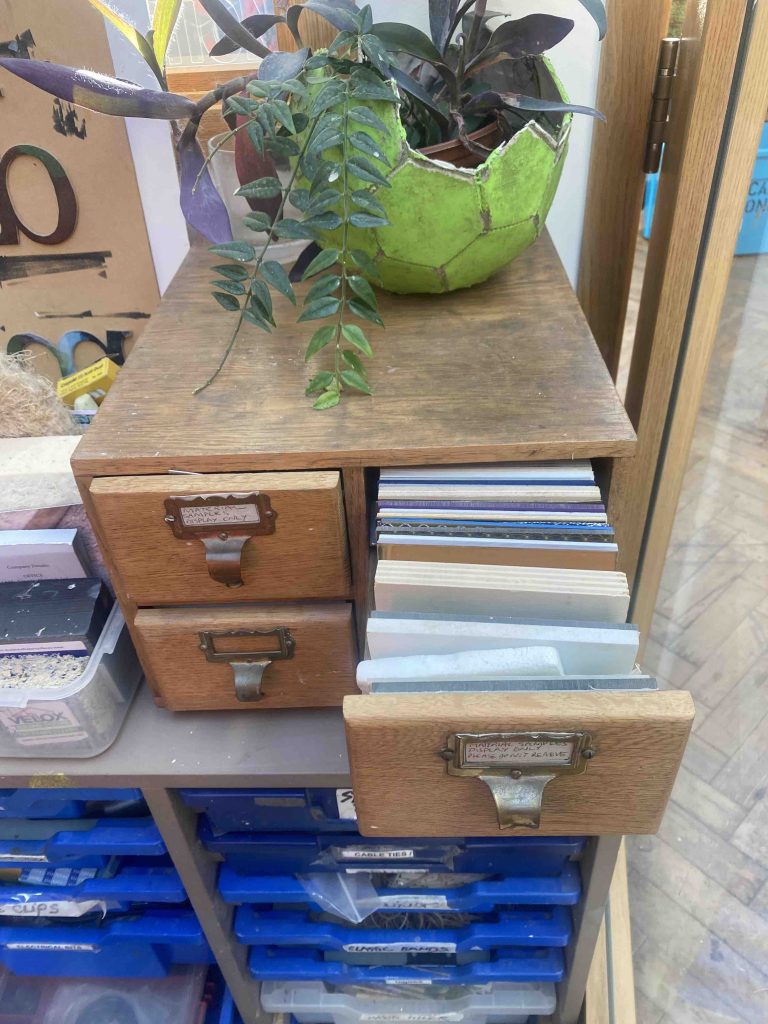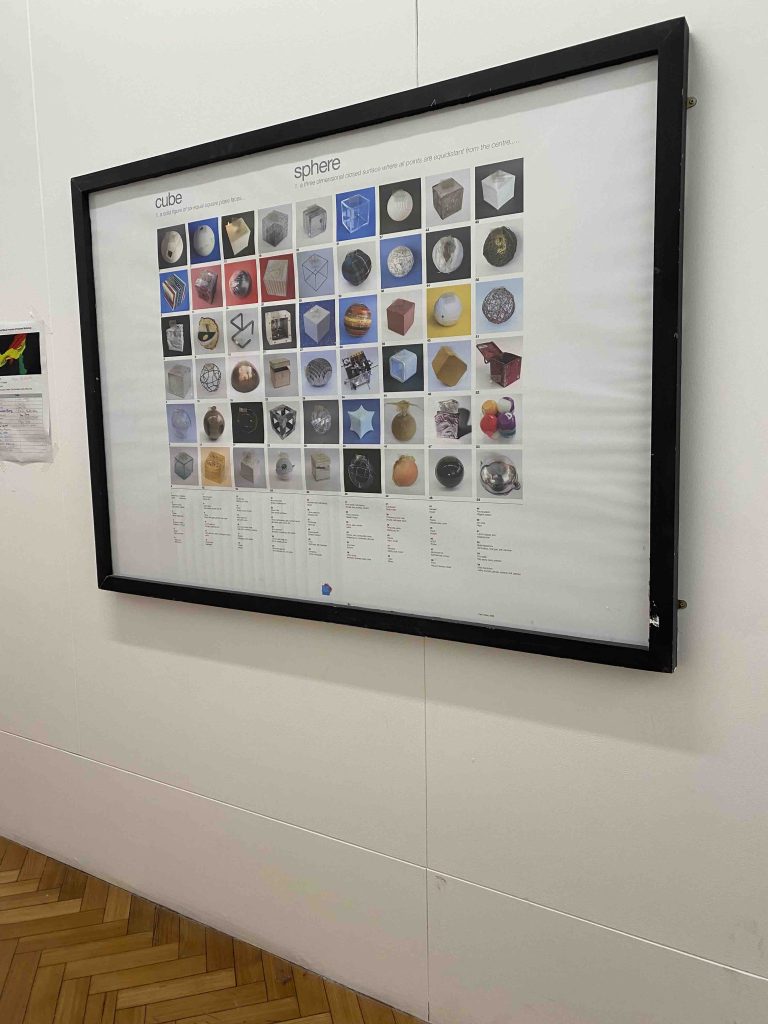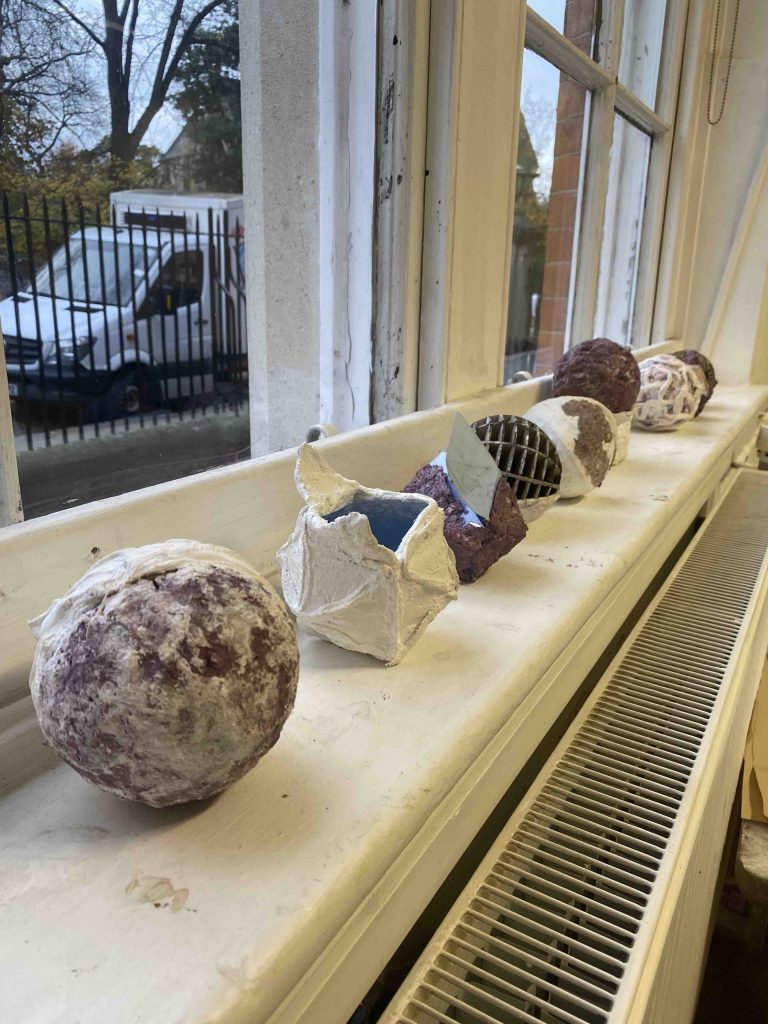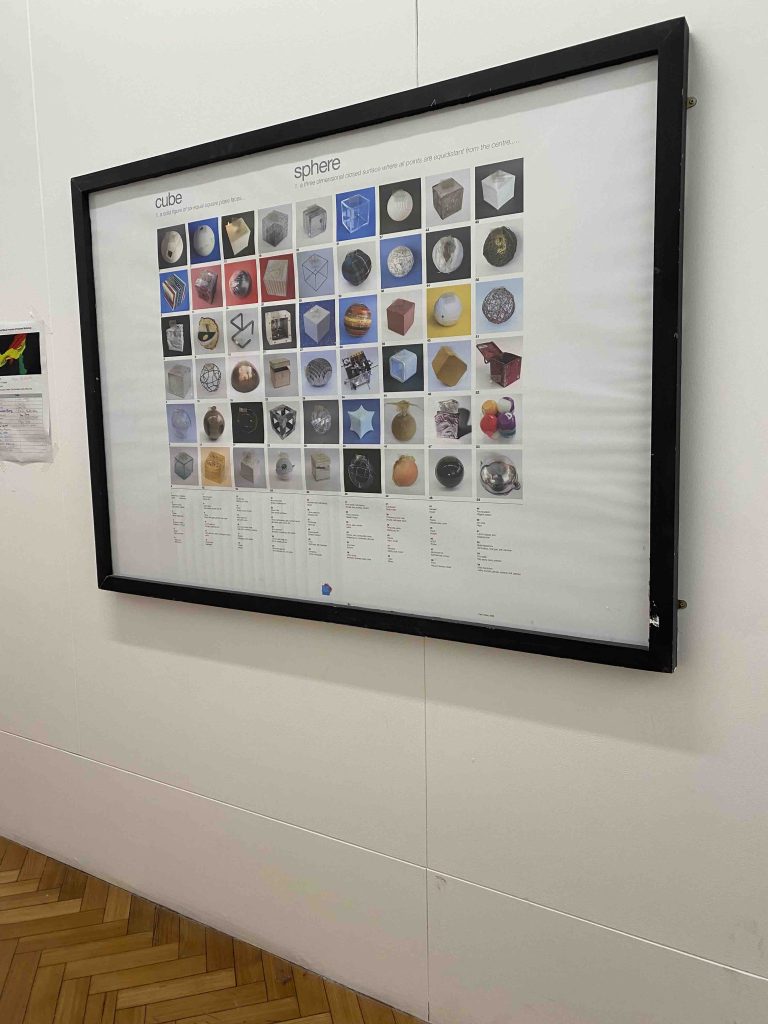One aspect of my ARP was also to get the voices of the technicians and their angles about teaching making skills to the Foundation as well as their opinion on the space left for making in the Foundation curriculum.
As a previous technician, I have seen first-hand the different learning processes and tensions around the teaching of a skill in a very limited time, but also the satisfaction making through the hand give to some students, the confidence it builds and the collaborative minds working together between students and technicians students.
Paul Lindey is now retired but was the head technician at Camberwell and also in Wimbledon. His angle is precious as it reflects on the evolution of UAL as well as the place-making across the year in the Foundation curriculum.
Paul Lindey – Studied and trained as a Sculptor at Bath University and Chelsea College, worked in Wimbledon and at Camberwell. He grew up in a hands-on family, his dad was an engineer and hacked the house to teach him independence, and his mum was an excellent knitter, so making has always been seen as a skill.
His ARP project was based on my ARP question, as while discussing with the CCWF technicians., I discovered that he was the author of a poster placed at the entrance of the 3D workshops and also of a material collection inside the workshops.
His material collection is composed of labelled and organised material with its composition, processes and the names of the suppliers.
A previous data centre for all future creatives, opening discussions on how things are made, the potentiality to hack these techniques in a more DIY, or to reach out to these suppliers and collaborate on a project or future professional projects.

These material libraries or samples, are essential for Technicians to support students all long their project and to make them think or excited about making.
They usually give the sample to the students to feel/examine while talking about their project :
“I like the idea of having things in your hands, because as a teacher to pass things between the hands is great”
As part of his ARP project, Paul developed a series of spheres and cubes made of different materials with different processes as a conversation starter for timid students. Getting them to think about how it is done, and giving them inspiration and motivation to test these processes all made in the 3D workshops.

Paul was the first technician to do a Pgcert :
“It is great that the Pgcert became available to Technicians – was a recognition that technicians are actually teaching – “
He talked about how his PGcert into the workshop, was motivated by the comments “you are wearing the wrong shoes” when new students would come in with their sketchbooks- which technicians had to go because of health and safety but that is not a great introduction.
His Pgcert was how to smooth this interaction by showing what technicians were doing in the workshop and giving terms and references to the students.
His Pgcert open a dialogue between the “academic” and the technicians, to make their expertise recognised and their teaching skills aligned with the rest of the university.
Paul highlighted that there is a difference between technicians and tutors, because they are not so involved in the pastoral care aspect of teaching, and they are here to support “nothing is impossible” while reminding that not everything is possible, helping students with their problem-solving skill and making them realist.
He reflected on how the role of the technician has changed through his time at the University and how things were “terrible” at the beginning like being asked to mend a broken window – people did not recognise the expertise and value of their knowledge.
At the foundation, he seemed to have found his place as a Technician:
“You cross a whole range of stuff in Foundation, I really like it, it is really interesting because we had an open-access workshop, kind of like here now, students could come in, well I have these ideas however that is, a drawing whatever, We used to encourage a quick drawing or bringing models and then we would say like what do you want to be or are you doing textiles or sculpture and that – you didn’t have to go through this labelling, like channelling, you could just talk to them.”
During the interview, he mentioned how the foundation is not how to get into refined work but more how to experience things – He is not sure if making replicas like the same would serve a good teaching purpose.
“So a lot the technical knowledge is to teach people how to what they are doing – to steer them”
One thing Paul noticed is the student number increasing, technicians have less time and “cut the chase” to know what the students want to do more than a slow exploration with the students, therefore having a material library or sample helps to ease those conversations, being in the instant and doing both reflection and project research/development with students.

His poster, which is his ARP project – emulates the idea of a Matter table and how you can think of a library of materials pre-internet – and a way to archive and classify materials and processes.
His project fills the gap of a generational problem, where physicality is less and less, a making because of a scarce skill.
Student often assumes more than they test their ideas in the real world, leading to several problems in the final response to the brief and their professional portfolio.

There is also the fact that more and more students are international and not always comfortable in English, in a noisy workshop, the touch thing is important, it enables students to communicate not always with words while learning a professional language, and terms and expanding their English.
When asked how did this ARP change the relationship between students and technicians, Paul replied:
“I think it did, it made our job easier because a lot of teaching in Foundation is repetition, saying the same things to people over and over again and that is for technicians and staff. So it cuts the core information much quicker, it meant that things were more accessible.”
He admits he did not have the time to evaluate the point of view of the students but he regrets he did not create some feedback forms.
But he does think that this ARP poster enabled technicians and students to get to interesting things much quicker.
We discussed how at the time of his ARP, Wimbledon students’ numbers allowed this experiment to work, but once the number increased it was difficult as it stayed a tool.
The role of the technicians changes into a more “service provider” as they have less time with students and more students to support.
One part of his ARP was to create guidance for students and maps of the area, where to buy wood, plaster etc.. How to book the workshop, what can I wear in the workshop etc…
It created transparency in the internal logistics of the workshops for both the students and the tutors.
He decided to invite tutors to come to the workshop and show them around and discuss the role of the technicians in a more holistic way, who the technicians are what they do outside the foundation and make small hands-on workshops asking them how to put ship (in hard material) inside a glass bottle and discuss how it can be done…
He loved those moments and how it meant the staff could relate to him and he could relate to them as well, and it eased the relationship, by including people in activities.
The end of the interview was on how the Pgcert gave him the recognition of his teaching skills and expertise but also how it paved the way for other technicians to do it and how it facilitated better relationships between technicians and tutors and technicians and students.
I think this interview opened my eyes to the lack of collaboration between technicians and tutors and how it is something yet unresolved.
One thing this interview also reminded me, of is that with the move from Camberwell to a new location in Shepherds Bush and the fact that the workshops will be no longer close to the design studios, with the numbers of students drastically increasing, there are risks that these tensions get worse and the gap between technicians and tutors affect the students making skills.
The geo localisation of the workshop plays a key factor in the Camberwell Foundation, by its proximity easing the fluidity between workshops and studio, mobility of both tutors, technicians and students but also the fact that tutors and technicians eat together in the workshops at lunch and can chat informally about students work.
There are currently palpable worries about these connections being lost.
But Paul’s ARP and the result of my ARP allow me to reflect on what could work:
-Organising regular workshops between tutors and technicians on staff development day
-Share all project briefs with technicians
-Invite technicians to join Tutorials for the Final major project
Visit the workshops with students at the beginning of the academic year
-Include some material samples and processes inside the design studios
-Stress the importance of the consultation session with technicians to students before booking the workshops
-Organise studio teaching lessons inside the workshops with the approval and expertise of the technician’s team.
-Continue the current beginning Unit 2 format of making skills workshops – and calling them Ateliers – going along the project brief
-Making sure these include low-tech, low-cost, recycling methods
-Perhaps discuss with teaching staff the necessity of a designated area in workshops where studio lessons can be delivered, while not interfering with the workshop’s duties, timetables and bookings. It would be an in situ lesson, supporting students’ project development
It anyway gave me a lot to reflect on and how to organise this next academic year after the move.
It also made me realise that this change and implementation are a team effort and therefore being put in place, would probably allow relationships to tighten and flourish between technicians and tutors with a real benefit for future foundation students.
“It’s all about supporting teaching- you are technically lecturing, you are not in a podium, you are kind of in a better place, well you just are just hands-on, next to each other, one to one, you are just doing the best for their learning.”
Paul Lindey.

